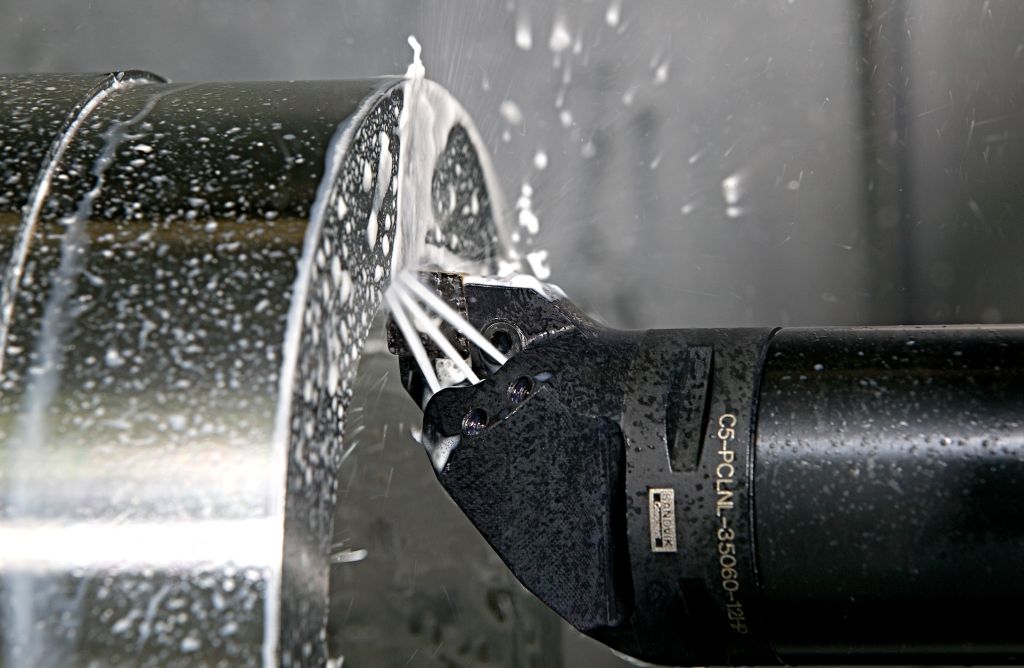A titan among titans

If you are dealing with difficult-to-machine materials such as titanium, special know-how is required to master complete machining. With a machining solution for aircraft landing gear parts, WFL MILLTURN Technologies says it has expert know-how in this area.
The aerospace industry is an important market segment for WFL. In this area of industry, more and more materials that are difficult to machine are gaining ground. Titanium processing in particular is a field in which WFL can score points with its accumulated know-how.
Titanium has always made special demands on tools and machines when it comes to machining. In recent years, titanium 3.7165 has established itself as a lightweight material with excellent properties. It is one of the most widely used titanium alloys, containing 6% aluminium and 4% vanadium. This alloy, commonly referred to as Ti6Al4V, has a good combination of toughness, corrosion resistance and toughness. Although good empirical values ​​and cutting data are now available for this material, machining is still one of the supreme disciplines in machining.

New titanium alloys are constantly being developed for special applications, often due to special customer requirements. Titan 5553 (Ti5Al-5V5Mo3Cr) is considered by several WFL customers to be the desired material for landing gear production in the aviation industry. This material is characterised by improved properties in terms of strength and toughness. It is also less sensitive to structural changes when heated. This material is one of the real titans when it comes to machining and takes its name from Greek mythology. Ti 5553 is arguably one of the most difficult-to-machine materials on the market today. When processing it, a cutting speed of 45m/min should not be exceeded,
Titanium challenges
Problems such as spot heat due to poor heat conduction and the associated chemical change in the material (brittleness at higher temperatures) and the formation of built-up edges occur to a much greater extent with this material than with other titanium alloys. Therefore, with Ti 5553, special care must be taken to ensure that the cutting speed, feed and depth of cut are precisely matched. The use of suitable cooling lubricants is just as important as the right cooling strategy. Fast and continuous chip removal must be guaranteed. Another challenge with this material is the removal of the forging skin, which experts call ‘elephant skin’. Due to the upstream forging process and the resulting thermal and metallurgical influences, this skin has a very high edge hardness and due to the low modulus of elasticity, titanium tends to evade the pressure of the tool and to fuse with the cutting edge. As already mentioned, the machining should therefore be carried out at a low cutting speed, but with a relatively large infeed depth and an adapted feedrate. In any case, ensure that the tools are clamped in a vibration-free, sharp manner and that the workpiece is securely clamped too.
Experience is key
It is essential that the ability to cater for critical aspects of machining during manufacture is demonstrated as early as the design phase. For example, it is necessary to take into consideration the fact that different material thicknesses in the blank workpiece require modified machining strategies. Heat-affected zones must also be taken into consideration together with the cutting forces which occur.
Materials which are hard to cut like titanium have influenced the development of the WFL machines. WFL provides individual solutions for exactly these kinds of demanding applications. These also cover aspects such as cooling and production strategy as well as the actual machine.
“In order to be able to offer our customers a process-reliable solution, WFL has developed modules that allow the design of the machine to be precisely tailored to the respective application,” states WFL’s head of application engineering, Reinhard Koll.













